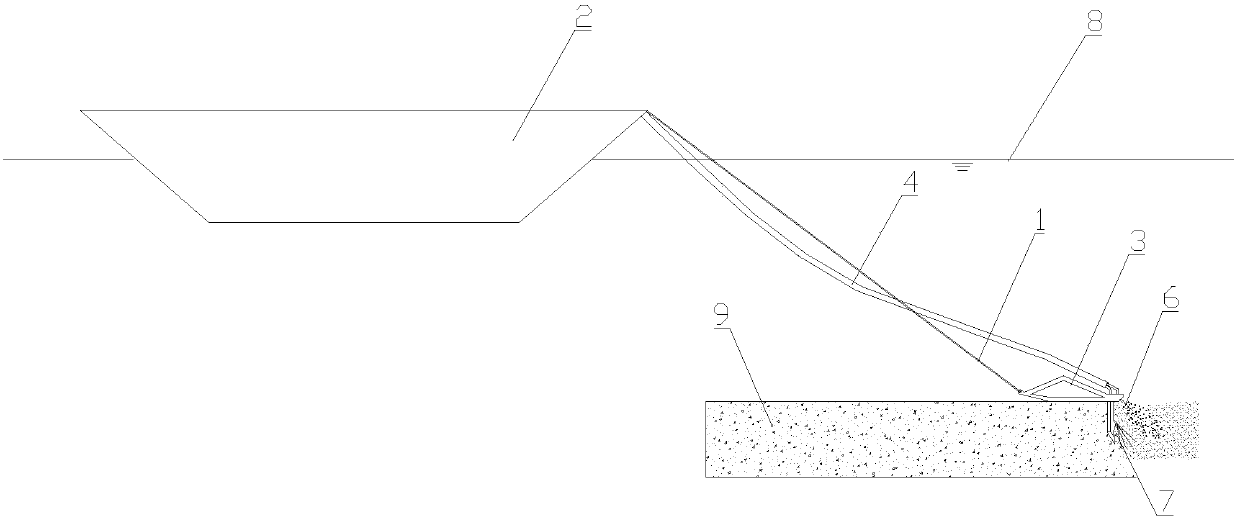Ship-borne seabed sediment restoration device and method
A seabed sediment, shipborne technology, applied in biological treatment devices, chemical instruments and methods, water pollutants, etc., can solve problems such as degradation of seabed ecosystems, threats to human health, and eutrophication of water bodies
- Summary
- Abstract
- Description
- Claims
- Application Information
AI Technical Summary
Problems solved by technology
Method used
Image
Examples
Embodiment Construction
[0028] Specific embodiments of the present invention will be further described below in conjunction with the accompanying drawings.
[0029] like Figure 1 to Figure 4 As shown, the ship-mounted seabed sediment repair device includes a repair device main body 3, a traction rope 1 and a delivery pipe 4. The repair device main body is connected with the traction ship 2 through the traction rope 1 and is located below the sea surface; the repair device main body 3 includes a bottom plate 5 And the exhaust assembly 6 and the drainage assembly 7 installed on the bottom plate 5. A bracket 10 is installed on the base plate 5 to ensure the strength and stability of the base plate 5 structure. The bottom plate 5 and the support 10 are made of stainless steel. When the towing ship 2 moves, the main body 3 of the drag repair device will be moved. The bottom of the bottom plate 5 slides close to the seabed, and the side of the bottom plate 5 close to the towing ship 2 is tilted upward. ...
PUM
 Login to View More
Login to View More Abstract
Description
Claims
Application Information
 Login to View More
Login to View More - R&D
- Intellectual Property
- Life Sciences
- Materials
- Tech Scout
- Unparalleled Data Quality
- Higher Quality Content
- 60% Fewer Hallucinations
Browse by: Latest US Patents, China's latest patents, Technical Efficacy Thesaurus, Application Domain, Technology Topic, Popular Technical Reports.
© 2025 PatSnap. All rights reserved.Legal|Privacy policy|Modern Slavery Act Transparency Statement|Sitemap|About US| Contact US: help@patsnap.com



